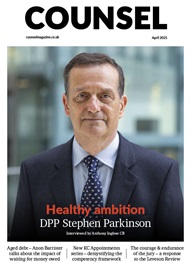*/
Two of the most senior judges expressed concern at the lack of diversity among judges.
‘Despite the leadership that has been demonstrated over the last year, progress is not as fast as we would wish,’ the Lord Chief Justice, Lord Thomas, and the Senior President of Tribunals, Sir Ernest Ryder, said in a statement accompanying the annual statistics for the make-up of the bench.
The figures showed that from April 2014 to April 2017, the percentage of female judges has increased from 18% to 24% in the Court of Appeal; 18% to 22% in the High Court and 24% to 28% in the courts judiciary.
While the percentage of black and minority ethnic (BAME) judges had increased from 6% to 7%, the judges said it was ‘disappointing’ that the percentage of non-barristers dropped from 37% to 34%.
In tribunals in the last four years the proportion of female judges rose from 43% to 45%, and the percentage of BAME judges increased from 9% to 10%, but the proportion of judges with a non-barrister background fell from 67% to 66% between 2015 and 2017.
The two senior judges said: ‘We remain very concerned about the slow recruitment of BAME judges and the downward trend of new non-barrister (solicitors and legal executives) judges, despite the dedicated work undertaken by the Judicial Diversity Committee.’
Two of the most senior judges expressed concern at the lack of diversity among judges.
‘Despite the leadership that has been demonstrated over the last year, progress is not as fast as we would wish,’ the Lord Chief Justice, Lord Thomas, and the Senior President of Tribunals, Sir Ernest Ryder, said in a statement accompanying the annual statistics for the make-up of the bench.
The figures showed that from April 2014 to April 2017, the percentage of female judges has increased from 18% to 24% in the Court of Appeal; 18% to 22% in the High Court and 24% to 28% in the courts judiciary.
While the percentage of black and minority ethnic (BAME) judges had increased from 6% to 7%, the judges said it was ‘disappointing’ that the percentage of non-barristers dropped from 37% to 34%.
In tribunals in the last four years the proportion of female judges rose from 43% to 45%, and the percentage of BAME judges increased from 9% to 10%, but the proportion of judges with a non-barrister background fell from 67% to 66% between 2015 and 2017.
The two senior judges said: ‘We remain very concerned about the slow recruitment of BAME judges and the downward trend of new non-barrister (solicitors and legal executives) judges, despite the dedicated work undertaken by the Judicial Diversity Committee.’


Now is the time to tackle inappropriate behaviour at the Bar as well as extend our reach and collaboration with organisations and individuals at home and abroad
A comparison – Dan Monaghan, Head of DWF Chambers, invites two viewpoints
And if not, why not? asks Louise Crush of Westgate Wealth Management
Marie Law, Head of Toxicology at AlphaBiolabs, discusses the many benefits of oral fluid drug testing for child welfare and protection matters
To mark International Women’s Day, Louise Crush of Westgate Wealth Management looks at how financial planning can help bridge the gap
Casey Randall of AlphaBiolabs answers some of the most common questions regarding relationship DNA testing for court